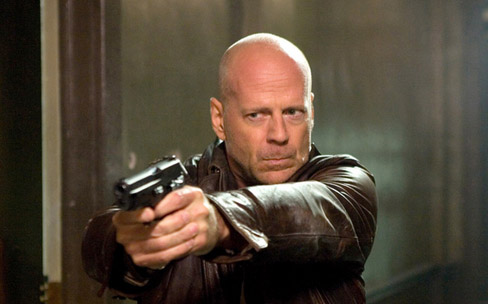I wrote this piece a few months ago, when I was still thinking I could sit through all the Friday the 13th, Nightmare on Elm Street, and Halloween movies. It turned out I couldn’t, but I did manage to write two reviews before I gave up. Here’s the first one.
Hello and welcome. I’m Jander Rothberg.
And my name is Sir Nigel Sandstone.
We’re here today to discuss the celluloid trash—I mean, the cinematic masterpie—the film Friday the 13th. Filmed on a budget of $700,000 and released in 1980, this so-called ‘slasher flick’ spawned—and I do mean spawned, as spawn is a word most often associated with slimy things with tentacles—spawned a series of sequels.
Now now, Jan, you’re getting ahead of yourself, no?
Oh very well. Hand me the tea, will you? The film’s plot, such as it is, can be summarized thusly. The movie begins in a place called Camp Crystal Lake in 1958. Two teenage camp counselors sneak off to copulate and are brutally murdered. Twenty years later, the camp is re-opened and teenage camp counselors are brutally murdered, usually after sneaking off to copulate.
Now now, Jan, there’s a bit more to it than that.
Is there? I was under the impression this was a quickie rip-off of John Carpenter’s far superior Halloween that happened to have enough nudity and gratuitous violence to be successful and give the filmmakers the wrong idea that they should keep making movies rather than turning their talents to some other medium that might better suit their talents. Like fabric sculpture, perhaps.
All right, enough. I for one thought the film was relatively effective at what it was trying to do, which is to scare you.
But what kind of goal is that for a work of art? Is there nothing more?
What about Psycho?
Touché. But I do hope you’re not comparing Alfred Hitchcock to Sean S. Cunningham, the director of this film?
What if I were?
Then I should beat you about the face and neck until I was certain your fit of madness had passed.
As everyone knows, the big twist in Friday the 13th is that the killer turns out not to be a masked male psychopath—that came in the later films—but a middle-aged woman, the mother of a boy named Jason Voorhees who drowned at the camp in 1957 while the counselors were off copulating, as you put it.
Hmph. ‘Twist.’ I suppose it was fairly clever. But once the woman, played by one Betsy Palmer, was revealed, I have to say the heroine did not handle herself very well. How many times did she beat the woman down, then leave without making sure she was unconscious?
Well, one must expect such conventions of the genre.
Oh please. But I did like the old crazy fellow in town who told them that the Camp had a death curse. If I had a nickel for every time I was told one of my vacation destinations had a death curse…
…then what?
Pardon?
If you had a nickel for every time that happened, then what?
I’d be rich, I believe the expression goes.
People have actually told you that a place you are going on vacation has a death curse?
I was merely making a joke, Nigel.
So no one’s ever actually told you a place you were going had a death curse.
Well, there was that one time, when I was going to visit New Haven. But that turned out to be true.
Moving on. What did you think of the cast? I thought the actors were generally a bit stilted and untrained, but that was fine, since all they really had to do was die in horribly violent ways.
Yes, it was a very rewarding film in that regard.
I suppose we ought to mention that this film features a very young Kevin Bacon.
Yes, he gets stabbed through the throat from under the bed. Excellent role for him. Unfortunately for those of you who like to play “Six Degrees of Kevin Bacon,” none of the other actors in this film have ever done anything else.
Now that’s neither nice nor quite true.
It’s mostly true.
…yes.
Also, I’m unclear as to why I had to be subjected to Mr. Bacon wearing a skintight banana-hammock and, later, his exposed buttocks.
I did like the heroine, Alice. I thought Adrienne King made her charming and believable.
Aside from the character’s astounding lack of common sense and mild-to-moderate arm strength, I’ll agree with you.
Of course, it’s the next film that the infamous Jason Voorhees takes his place as the antagonist of the series. But I’ll let Mr. Clarke tell you about that. Until next time, my friends.
Enjoy the day.




